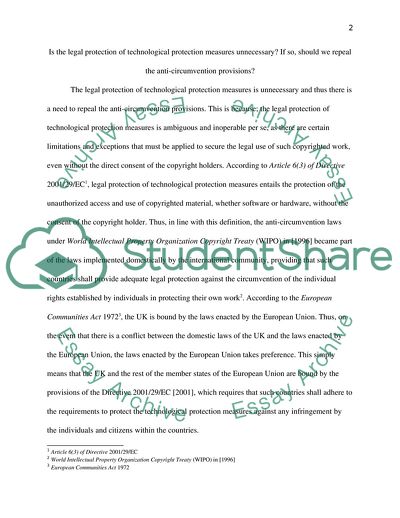Cite this document
(Is the Legal Protection of Technological Protection Measures Assignment, n.d.)
Is the Legal Protection of Technological Protection Measures Assignment. https://studentshare.org/law/1827843-advanced-copyright-and-design-law
Is the Legal Protection of Technological Protection Measures Assignment. https://studentshare.org/law/1827843-advanced-copyright-and-design-law
(Is the Legal Protection of Technological Protection Measures Assignment)
Is the Legal Protection of Technological Protection Measures Assignment. https://studentshare.org/law/1827843-advanced-copyright-and-design-law.
Is the Legal Protection of Technological Protection Measures Assignment. https://studentshare.org/law/1827843-advanced-copyright-and-design-law.
“Is the Legal Protection of Technological Protection Measures Assignment”. https://studentshare.org/law/1827843-advanced-copyright-and-design-law.


